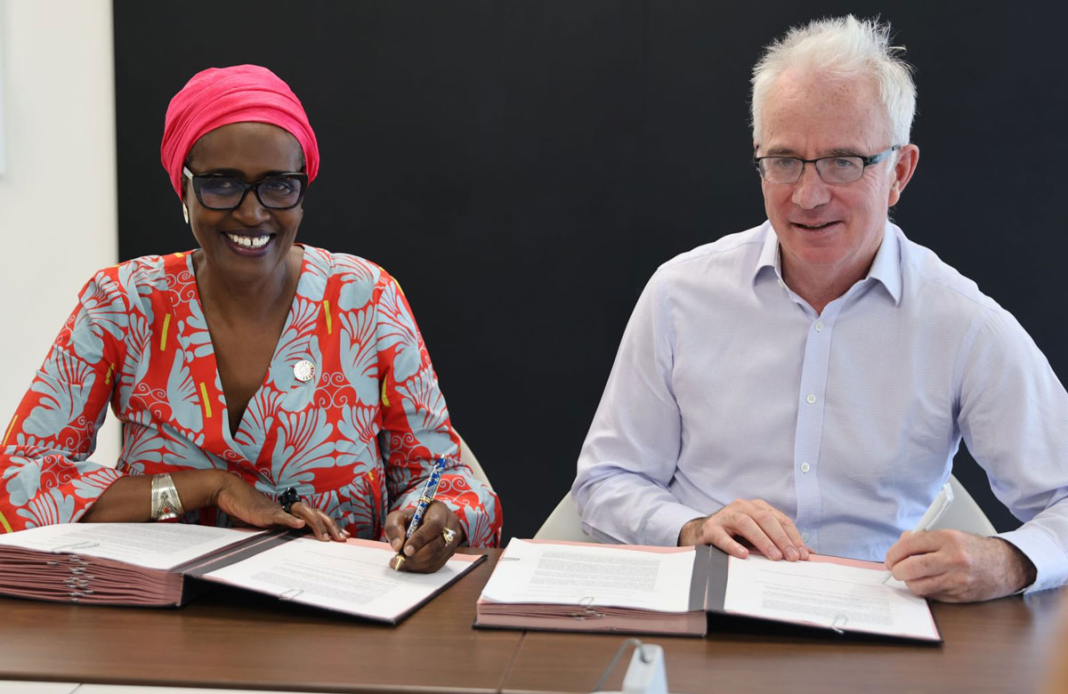The UNAIDS Executive Director, Winnie Byanyima, and Executive Director of The Global Fund to Fight AIDS, Tuberculosis and Malaria (the Global Fund), Peter Sands, have signed a new strategic framework for cooperation and collaboration to end AIDS (2024 –2028).
The agreement renews the organizations’ longstanding partnership and aligns ongoing collaboration with the most recent United Nations General Assembly Political Declaration on HIV and AIDS: Ending Inequalities and Getting on Track to End AIDS by 2030.
“The longstanding partnership between UNAIDS and the Global Fund has been instrumental in supporting many millions of people living with or vulnerable to HIV to enjoy better health and well-being through improved access to essential services,” said Winnie Byanyima, UNAIDS Executive Director.
She added, “We at UNAIDS are excited to continue building our collaboration with the Global Fund as we head toward our common goal of ending AIDS.”
The new strategic framework puts people and communities at the centre and aims to unite countries, communities and partners across and beyond the HIV response to take prioritized actions to accelerate progress towards the vision of zero new HIV infections, zero discrimination and zero AIDS-related deaths.
“Our strong collaboration, especially at the country level, makes a huge difference in the fight against AIDS,” said Peter Sands, Executive Director of the Global Fund. “Our counterparts at UNAIDS play a crucial role on the ground: they help put communities living with and affected by HIV at the center of the response and ensure that rights-based approaches are widely adopted.”
The Global Fund Strategy (2023–2028) Fighting Pandemics and Building a Healthier and More Equitable World is fully aligned with the Sustainable Development Goals and UNAIDS’ Global AIDS Strategy (2021–2026) End Inequalities, End AIDS, which guides the global AIDS response. It calls on all actors to scale up and sustain global and domestic investments to achieve the strategy’s ambitious targets and commitments for 2025 as well as put the world on course to end AIDS as a public health threat by 2030.
Collaboration under the new agreement will focus on reducing the inequalities that drive the AIDS epidemic and closing the HIV prevention and treatment gaps that are preventing progress towards ending AIDS. It will also prioritize people who are not yet accessing life-saving HIV services.
The common approach supports a renewed focus on primary prevention, addressing structural drivers of HIV infection and AIDS-related deaths, and challenging inequities and human rights and gender-related barriers to services including stigma, discrimination and criminalization. It leverages new HIV prevention and treatment modalities, precision public health approaches, as well as supporting synergies between HIV services and related areas of health.
In addition, the framework continues longstanding support to strengthen countries’ capacity to measure their epidemics and monitor their responses, and act on the data to drive results. There will also be a push for countries to map out the longer-term sustainability of the HIV response through stronger health systems, better-integrated services for HIV, and more streamlined donor contributions.







